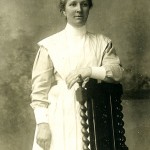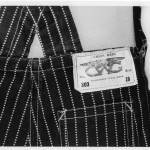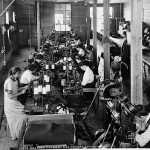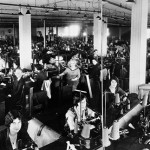In the book Women: Her Character, Culture and Calling published in 1890 the author writes; Woman the half of humanity, and therefore equal to man—Two-thirds of humanity ark laborers—Employments open to women in 1840 and the number open to-day—The number of women employed in the manufactures of Canada and the United States—Working side by side with man at the same employment, yet receiving from one-third to one-half less pay—Starvation wages paid to women and girls in the cities—Dressmaking compared with distilling and brewing, in productive value and numbers employed—School-teaching —Women do the work, and men get the pay—Average salaries paid to the two sexes in teaching—The quantity and quality of woman’s work—How can we remedy the inequality?
On July 15th, 2015, the Canadian Centre for Policy Alternatives (CCPA) released that Edmonton was the second to last worst city to be a woman in Canada. One of the evaluative factors was the near $7.00/hr wage gap that currently exists in Alberta. Edmonton holds a long history of women in the workforce, advancing at certain stages in time the status of women not only in the city itself, but the province of Alberta. However, history has shown a long struggle with equal pay for equal work in the Northern Gateway City. What is the story of women working in Edmonton? How have this city’s female predecessors contribute to the narrative of women in the workforce? As this history is broad and expansive, we will be focusing on two significant sectors of women in the labor force: nursing in Edmonton and the Great Western Garment Company (GWG).
It should be stated that is a definition of ‘work’ for women over the early courses of history is complex. Women have always worked in the setting of home, and not until the advent of the Industrial Revolution did society begin to see women working outside of the domestic sphere. In their joint work The Women Who Toils: Being the experiences of two ladies as factory girls by Mrs. John van Vorst and her sister Marie van Vorst published in 1903 followed their experiences as two affluent women in the United States through their pioneer social investigation under false identities in working class conditions in America. They illustrate the tasks of women in a Pittsburgh factory at the turn of the century; “We set the table for two hundred, and do a thousand miserable slavish tasks that must be done again the following day. At twelve, hundreds troop in, toil-worn and begrimed. They pass like locusts, leaving us sixteen hundred dirty dishes to wash up and wipe. This takes us four hours and wherever we have finished the work stands ready to be done over the next morning with peculiar monotony”. This kind of work was not unique to women, but the pay that was received during this time, was. At the beginning of the 20th century in North America, wages for women were a fraction for that of an equal male worker. Due to the fact that factory owners, for example, had the liberty to choose the wages of their employees both male and female, it is challenging to pinpoint the exact disparity of wages prior to 1978 in Canada[1]. In addition, women were restricted to a limited number of employment fields. Teaching, nursery, factory work and waitressing in certain regions were deemed acceptable within larger society as professions women could move in outside of the home.
In 1916, Henrietta Muir Edwards, a member of the renowned Famous Five and a champion of women’s rights, published the first edition of The Legal Status of Women in Alberta. In Chapter XIV entitled ‘Factory Act’, Muir Edwards details the working conditions for women that must be adhered to (including work hours, provisions of health and safety and child labor). Even in this pioneering early work, there is a vague call for an ‘Advisory Committee’ to determine the ‘minimum wages’ of workers, and not to establish a equality between male and female workers.
Of the acceptable professions to partake as a woman in, nursing developed early in Edmonton’s history. The first European nurses arrived in Edmonton by ox-cart in 1859 at the request of a local priest. These women were members of the Sisters of Charity (or Grey Nuns as they are also known), a branch of the Catholic Church. Their duties were to provide medical care, shelter and education to those in need, regardless of ability to pay for services. The Sisters of Charity also did not receive payment for their work, encouraged that their work was for the greater public and charity. The sisters also had to work for survival—farming and providing food for the mission. In Edmonton, an isolation hospital was the fourth hospital in the city to be built (approximately in 1907). In 1913, nurses of the isolation hospital marched on city hall over wages, job descriptions, and working conditions. As a result, the Superintendent of Nurses was fired and the responsibility for the hospital was transferred from the Medical Officer of Health to a local board. In 1916, the Registered Nurses Act was passed (after lobbying for professional status, which had not existed until now) establishing the Alberta Association of Graduate Nurses, which continues today as the College and Association of Registered Nurses of Alberta.
The Great Western Garment Company was established in Edmonton in 1911 by Charles A. Graham and Alexander Rutherford, the first Premier of Alberta. A denim and western wear focused distribution, their slogan of “They wear longer because they’re made stronger” sought to appeal to a specific demographic of farmers and the working class. GWG employed a large female workforce; a few men were also employed there as well. However, duties were assigned by gender. Men were generally employed as cutters and pressers while women worked as sewing machine operators. Women’s wages were lower than men’s: “In general, notes historian Linda Kealey, ‘women’s work in the clothing trades was labeled unskilled or less skilled then men’s, and the sexual division of labour was reinforced by low wages.”[2]
Labor unions in Alberta began with a surge of economic prosperity and population at the turn of the 20th century. In 1898, the Trades and Labour Congress in Alberta “called for the exclusion of women from the labour force as part of its platform of principles,” which remained the case until 1914. The primary concern was the impact of women workers on men’s jobs and wages. In their view, employers took advantage of the large number of women seeking work to push wages down, which then affected wages of male workers, whom the labour movement (along with the rest of society) regarded as family providers financially. The exception to this practice was the United Garment Workers of America, which unionized the mostly female workforce at GWG plant only three months after it opened in January 1911[3]. Waitresses were also vocal players on the Edmonton labor union stage. In May 1935, 150 waitresses and kitchen staff at twenty-five Edmonton restaurants went on strike at the height of the Depression because they were being paid on average $4.50 per week and working up to twelve hours a day, despite the minimum wage board having set their pay at $9.50 for a forty-hour week. Hundreds of unemployed men on relief, who were also on strike at the time, supported the women by joining their picket lines. The strikers formed the Restaurant Workers’ Union, and — with the help of the secretary-treasurer of the Edmonton Trades and Labour Council, Alf Farmilo, they were successful in getting the majority of restaurant owners to sign an agreement to pay the minimum wage. It must also be noted that the female to male wage gap within a unionized workforce is also significantly lower than in the non-unionized workforce. To give a modern example, in 2010, women in a union earned 93.7% of what men in a union earned; whereas women not in a union earned only 79.4% of what their male counterparts earned[4].
To return to Women: Her Character, Culture and Calling, how do we remedy the inequality that exists between the genders? In their words, and resonates with modern Edmonton and Alberta; Allow woman to enter any field of labor—Give woman a chance to protect herself—Woman in the majority—”The survival of the fittest”—Too many women in same callings, and too few in others—Give to woman the same preparation for life-work as to man—Multitudes of women compelled to go into life’s battle unequipped Give woman the ballot, that she may protect herself—Let women tread the steps by which man has gained his freedom—Is there danger that woman may lose ‘ler womanliness ?—True womanhood depends on the individual, not on the occupation—The development of one sex is the advancement of both—The woman’s cause is man’s
Alberta must continue to support incentives for the better and equal employment of women. Paid family leave, growth and training for ‘non-traditional’ industries which often pay more than typical ‘women’s’ industries, and consistent support from all labor unions on the grounds of gender representations. We have come a long way in the world of working women in Edmonton, but there is ever so much more to go.
Works Cited:
[1] In 1978, women of full-time, full-earner worker status made 63% less than then men of the same category
[2] From Working People in Alberta: A History by Alvin Finkel
[3] From Working People in Alberta: A History by Alvin Finkel
[4] From Working People in Alberta: A History by Alvin Finkel
Other sources:
http://www.100yearsofnursing.ca/english/frames.html
http://awmp.athabascau.ca/documents/The_Role_ofWomen_inDevelopment_ofHospitals_in1900-1910.pdf
http://www.aupress.ca/books/120194/ebook/99D_Finkel_2011-Working_People_in_Alberta.pdf
http://www.metronews.ca/news/canada/2015/07/14/best-and-worst-cities-to-be-a-woman-in-canada.html
© 2016 Natalie Zacharewski





